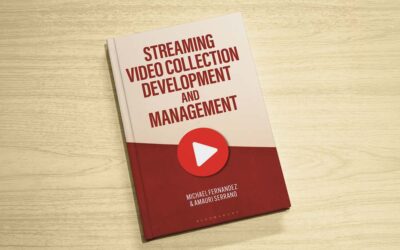Take the Opportunity to Connect with “Socially Distanced” Library Users
Miriam Kahn, MLS, PhD
Are you exploiting the opportunity to reach your socially distanced audiences? Are you using all your resources to bring in clients and researchers? Have you retained and expanded your audience and clients over the past year?
After a year of lockdown and limited access, answers to these essential questions about outreach and education provide documentation of your information center’s worth.
All it takes is a little creativity and time to turn your expertise into easy, effective outreach. Here is a robust example.
Creative Use of Collections to Enhance a Book Discussion
The Folger Shakespeare Library is running a monthly virtual book discussion “Words, Words, Words” https://www.folger.edu/words-words-words-book-club focusing on a contemporary novel or history book that’s related to an aspect of a Shakespeare play, character, place, or event. With the book in mind, a curator pulls together a dozen objects from the Folger collections to illustrate the time, place, and person that’s the focus of the book. Using staff moderators, participants discuss the book*. It’s an interactive conversation with discussion prompts, conducted using Zoom.
Exploring the Folger’s information and artifacts sheds light on the book. All the artifacts are digitized and linked through the catalog, made available for participants and researchers alike, during and after the moderated discussion. In addition, online participants receive a tasting menu, shared additional resources, and, of course, discussion questions.
As a follow-up, the Folger sent an e-mail with links to the objects shown during “Words, Words, Words” and a targeted exhibit of related materials for interested virtual visitors and in-person researchers.
Taking advantage of this interested audience, participants are encouraged to register for the next book discussion along with a low-key ask for donations.
Outreach to socially distanced audiences
Through outreach, you engage your current base of researchers and scholars while building new, “socially distanced” users and members interested in the riches of your hidden collections and expertise. The suggestions below can be developed singly or in combination as outreach tools, educational opportunities, and even fundraisers.
- Leverage staff members’ expertise through online lectures and webinars. It is one cost effective endeavor to reach your existing client base and draw in new scholars and researchers.
- Turn your bricks-and-mortar institution and collection into a virtual destination by mining your collections, using staff or local experts to build exhibitions.
- Present short programs on specific topics that illustrate the riches of the collections and provide access your online catalogs and collections.
- Host a book discussion group introduced by a staff member who highlights related items in the collection.
- Present lectures on current exhibits, projects, and publications, referencing either popular or “hidden” collections.
Summing It Up
This past year has jumpstarted many initiatives and virtual programs within libraries at cultural institutions. These can serve as models for special libraries in corporations, NGOs, professional associations and other organizations.
As at the Folger Shakespeare Library, book discussions in conjunction with bringing ‘hidden’ objects to online program participants might be an easy way to showcase resources and bring in new researchers and clients. What analogous initiatives could your library do with a little effort? Stay tuned for more ideas for drawing “Socially Distanced” audiences to Special Libraries and Museums.
Endnote:
* The Folger Shakespeare Library Staff selected The Moor’s Account by Laila Lalami, an account of the 1528 Narváez expedition, a travelogue by Cabeza de Vaca of the New World. The Folger connected “The Moor’s Account” with Othello by Shakespeare. For the value-added aspect of this virtual book club, a curator pulled maps of NW Africa and the Iberian Peninsula, illustrations of the period, and a few objects. The curator described how the objects relate to Shakespeare’s play and the book. https://spotlight.folger.edu/2021/02/08/collection-connections-the-moors-account-by-laila-lalami/.
Miriam Kahn, MLS, PhD
Miriam B. Kahn, MLS, PhD provides education and consulting for libraries, archives, corporations, and individuals. See Miriam’s pieces for Lucidea covering library technology and skills and strategies for special librarians. Refresh your knowledge of Lucidea’s flagship ILS, SydneyEnterprise, here.
Similar Posts
Growing Your Leadership Skills: 7 Tips for Special Librarians
Great library leaders aren’t born—they’re made through learning self-reflection and practice. Here are seven strategies to help you grow and lead with impact.
Keeping Up with Copyright and Generative AI: What Special Librarians Need to Know
As generative AI becomes more prevalent copyright law is evolving to address its impact. A new report from the U.S. Copyright Office provides guidance on what is (and isn’t) copyrightable.
Understanding Shadow AI: Risks Costs and Governance
AI can enhance search discovery and efficiency but unsanctioned adoption—known as “shadow AI”—can lead to budget overruns and compliance risks. Here’s how to evaluate AI pricing models and build a governance strategy that balances innovation with cost control.
Interview with an Author: Fernandez on Streaming Video Collection Development
As demand for streaming video in libraries grows so do the challenges of managing access budgets and licensing. Co-author Michael Fernandez shares key insights from his book “Streaming Video Collection Development and Management”.






Leave a Comment
Comments are reviewed and must adhere to our comments policy.
0 Comments